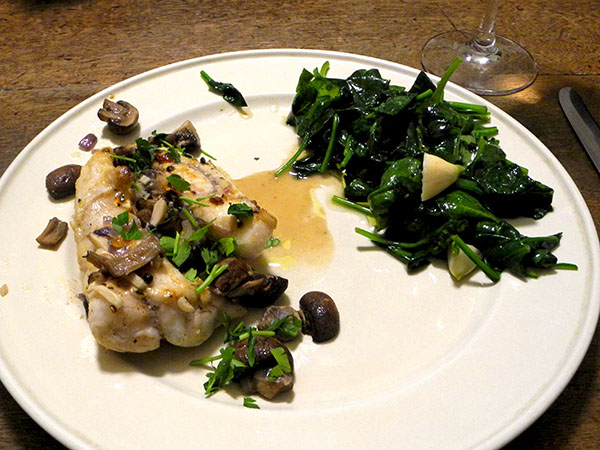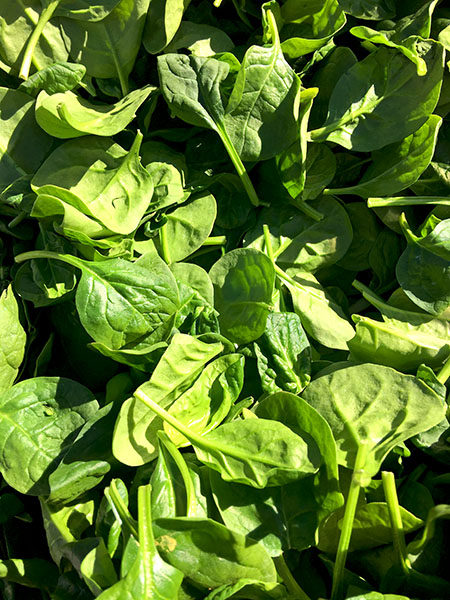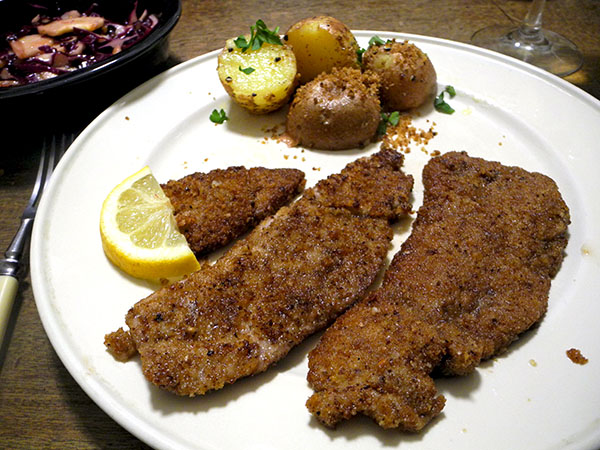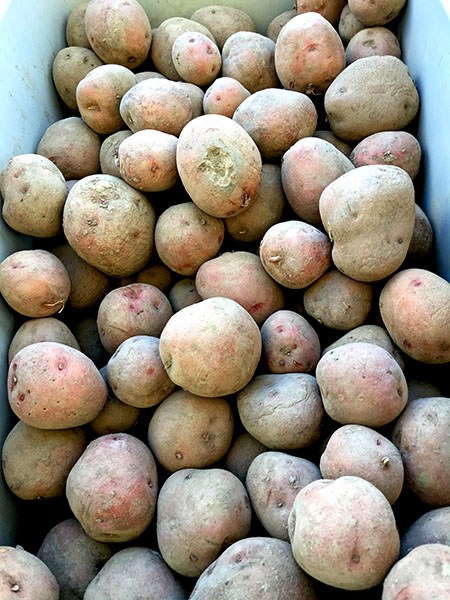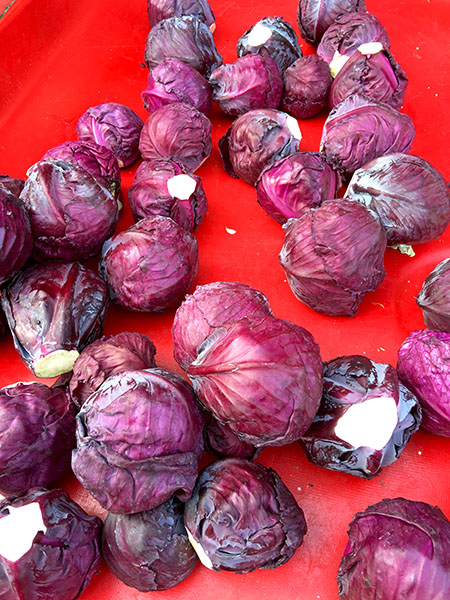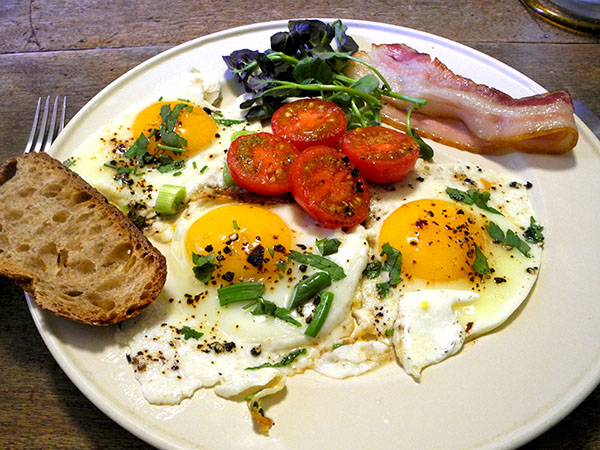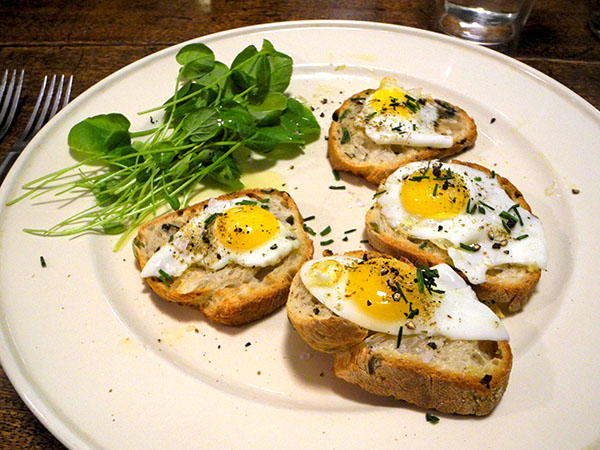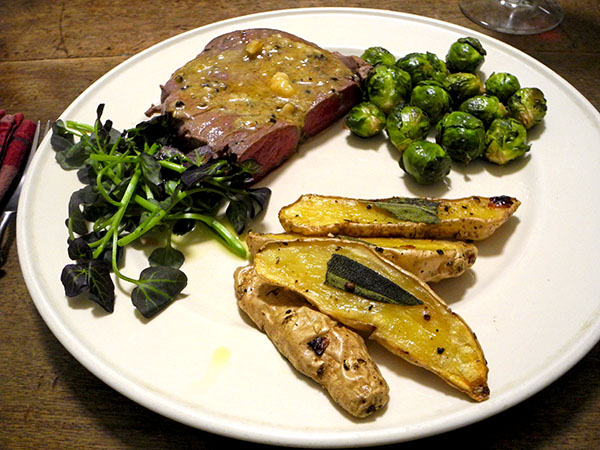
I wasn’t looking for game when I went to the Greenmarket last Saturday. I already had plans for our entrée that evening, but I stopped to say hello to the people at Quattro’s Poultry & Game Farm.
I went home with some venison.
While at the stand I had noticed a single venison steak at the bottom of one of their display containers. I made a mental note reminding myself that venison is occasionally available in our local farmer’s market (I’ve enjoyed Quattro’s stock once before, although it was some time back). I started to walk away but decided I shouldn’t pass up this opportunity: If I took it home I would be free to use it soon or else freeze it for a later meal.
I didn’t wait long: We enjoyed that meal Tuesday night.
Venison steaks are actually extremely simple to prepare, and I already had a a sauce, an interesting prepared butter, waiting in the freezer. Also, the only green vegetable I had on hand last night, a couple handfuls of some really beautiful Brussels sprouts, would be even more simple to cook than the game they might accompany.
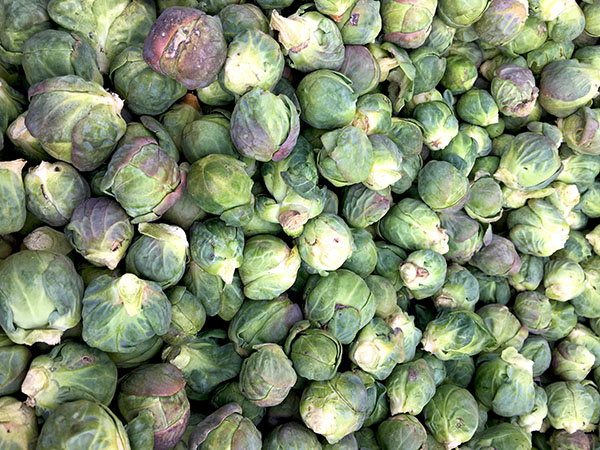
It all looked too easy to me however, and since I had more than enough time, I expanded the entrée with a little cress and the last 4 potatoes from a small store of fingerling potatoes I had been husbanding.

The meal was a small triumph, and I still have a little of that terrific butter left in the freezer for another night.
- one 14-ounce leg steak of free-range venison from Quattro’s Poultry & Game Farm, brought to room temperature, brushed with olive oil and seasoned with salt and freshly-ground Tellicherry pepper on both sides, set aside for almost an hour, grilled inside a ribbed, enameled cast iron pan over medium-high heat for a little over 2 minutes on each side, or until medium-rare, then cut into 2 pieces, a tablespoon or so of a room-temperature blue-cheese-and-fennel-seed composed butter placed on top of each while they were still warm [the butter being a frozen leftover made for an earlier meal of venison, using some softened ‘Kerrygold Pure Irish Butter‘ flavored with a small amount of toasted and crushed dried fennel seed; a few drops of Worcestershire sauce; salt; pepper; a couple ounces of Gorgonzola Casarrigoni from Whole Foods; and a sprinkling of crushed dried, very dark, heatless habanada peppers, all rolled between sheets of wax paper into a ‘log’ one inch in diameter]
- baby red watercress from Two Guys from Woodbridge, dressed with a little good olive oil, Maldon salt, and freshly-ground Tellicherry pepper

- four ruby crescent potatoes from Mountain Sweet Berry Farm, halved lengthwise, tossed with a little olive oil, salt, pepper, a small amount of crushed golden home-dried habanada pepper (acquired fresh last season from Norwich meadows Farm), arranged cut side down on a medium Pampered Chef unglazed ceramic pan, with half of a fresh sage leaf from Eataly placed under each, roasted at about 385º for about 20 minutes
- Brussels sprouts from Phillips Farms, tossed with olive oil, salt and pepper, spread, not touching each other, onto a large, well-seasoned Pampered Chef oven pan, roasted in at 385º (splitting the difference between the ideal temperature for the potatoes and the sprouts) for about 20 minutes until very slightly browned and very slightly crisp on the outside
- the wine was an Italian (Sicily) red, I Vigneri (Salvo Foti), Etna Rosso, 2015, from Flatiron Wines
- the music was Franz Liszt’s 1854-1857 ‘Faust Symphony’, Iván Fischer condiucting the Budapest Festival Orchestra, with tenor Hans Peter Blochwitz
